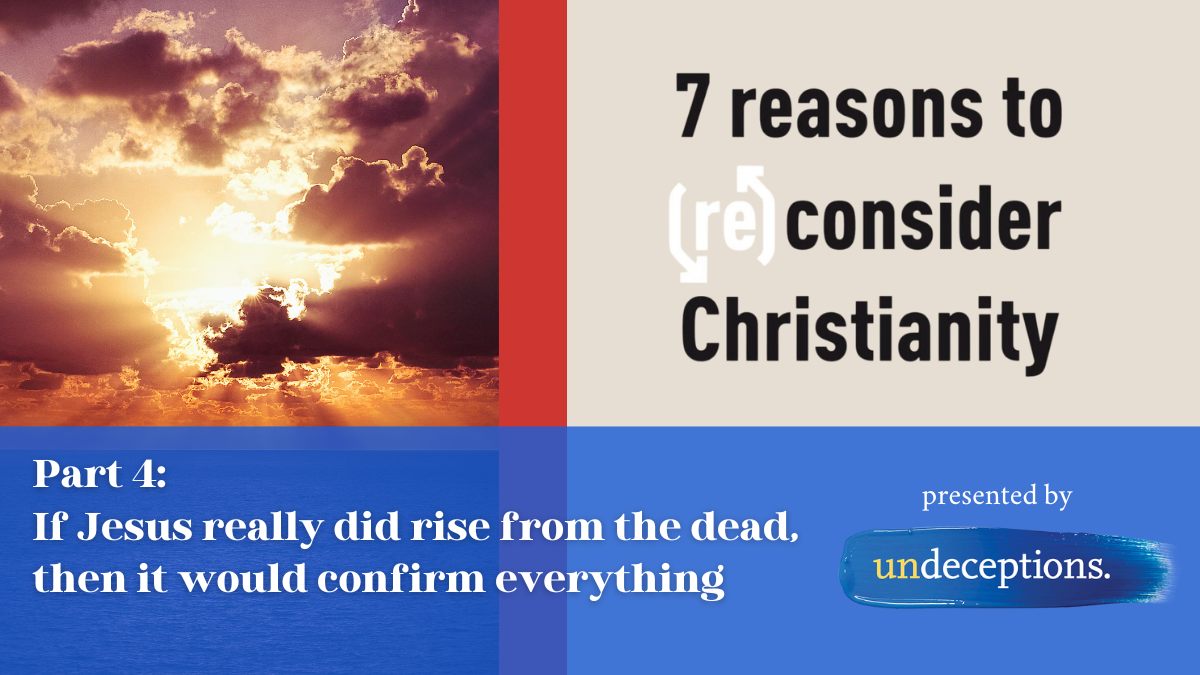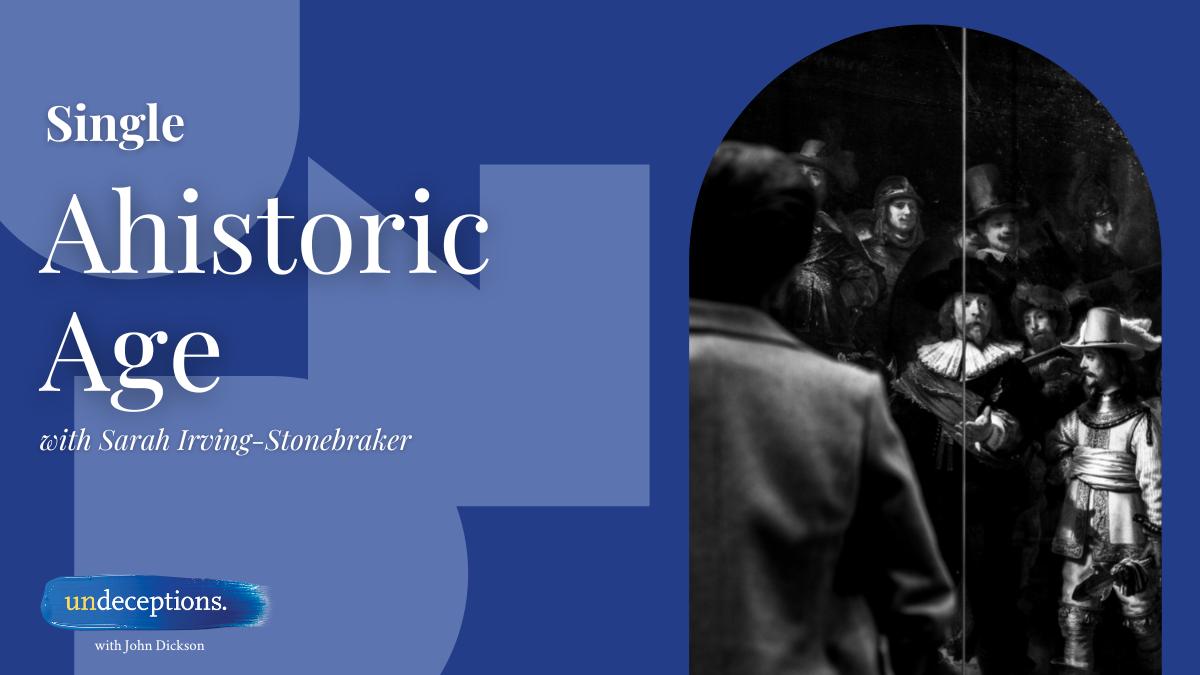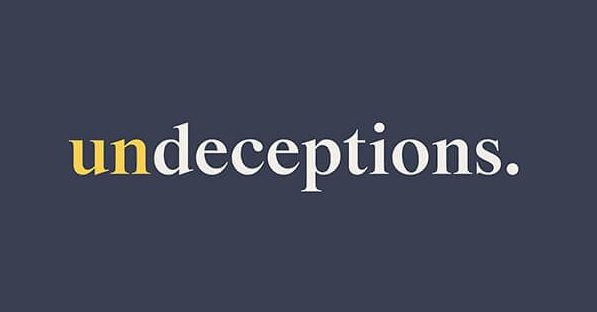For Christians, The Bible is far more than just a book about God.
Christians believe that it is literally God-breathed; it’s the instruction manual from the creator.
It tells us why He created humans, how we’re supposed to live, and how He’s saved humanity through the death of His son (who is Himself incarnate).
That this is God’s actual word to all humanity for all time is a pretty big claim for The Bible to make.
Perhaps one of the biggest reasons to doubt this is that the centrepiece of the whole book – the four Gospels which cover the life, deeds, and resurrection of Jesus – don’t seem to fully agree with each other on certain issues!
Did the Rooster crow two, three, or six times before Peter denied knowing who Jesus was?
Did Jesus clear the Jerusalem Temple at both the start and end of his ministry?
Just how many times did he feed crowds in excess of 5000, exactly?
Was the sermon on the mount actually on a mount?
Surely the God of the Universe, who created literally all matter in existence, wouldn’t be so careless as to allow the most important chapters of his authoritative book to go to print with errors and inconsistencies!

Was Jesus’ sermon on the mount actually delivered on a mountain? Or a plain? This icon hints at both
Whole publishing companies exist to edit children’s books – one would expect that for the divine, the stakes would be considerably higher!
If The Gospels are fundamentally imperfect – then does this mean they can’t be the perfect word of God?
Not at all.
Understanding Inerrancy
There does indeed appear, on a surface level, to be some contradictions in the “God-breathed” Gospels.
However, it’s perfectly possible to both understand – and in some cases even harmonise – these “errors” while holding that these four books are the word of God.
To do so though requires a good understanding of a word that frequently appears in Christian lingo.
Let’s talk about inerrancy.
Inerrancy means a lack of error or infallibility.
It’s a term often ascribed to The Bible and came to prominence due to the Chicago Statment of Biblical Inerrancy, signed by more than 200 evangelical leaders at a conference in 1978 (…in Chicago, obviously – read it here).
The Preface of it states:
The authority of Scripture is a key issue for the Christian Church in this and every age. Those who profess faith in Jesus Christ as Lord and Saviour are called to show the reality of their discipleship by humbly and faithfully obeying God’s written Word. To stray from Scripture in faith or conduct is disloyalty to our Master. Recognition of the total truth and trustworthiness of Holy Scripture is essential to a full grasp and adequate confession of its authority.
Inerrancy matters, because it affirms that the Bible is authoritative and can be trusted.
Inerrancy or divine dictation?
However, there are different ways to apply the term “inerrancy”.
Mike Licona, Professor of New Testament Studies at Houston University, helpfully points out that the doctrine of Biblical inerrancy isn’t the same as “divine dictation”.
This idea is controversial in some circles. However, Mike points to a very clear example in scripture where it is obvious divine dictation is not taking place.
“Paul’s memory lapse in 1 Corinthians 1:16 when he says ‘I don’t remember if I baptized anyone outside the household of Stephanus’ – well, if it’s divine dictation, then we have to imagine the Holy Spirit telling Paul to take a writing break while he checks his heavenly records only to find a relevant item missing,” he said.
“So what does theopneustos (Greek for ‘God-breathed’) mean?
“At a minimum, the word means … something has its ultimate origin in God,” he said.
Many Christian leaders will push back against this idea, and hold a view of inerrancy more akin to divine dictation.
However, not only does this not logically hold, but it goes against the literary tropes of The Bible.

‘The Inspiration of St Matthew’ (Caravaggio, 1602). Not included: The Gospel of Mark, thought to have been used as a source for his Gospel
The Christian scriptures have always had a human element.
The message itself is inerrant – the early church was very careful about which texts were both written by Apostles and to be God-breathed – but this inerrancy is found within a message constructed by imperfect humans.
This “humanity” to the Bible is actually part of what makes it so unique as far as holy books go.
We can say “Luke says”, “Mark says”, … or “God says” about Gospel passages.
The personal grammatical style, and the personalities of the authors, shine through the text of the New Testament in a way that can not be said of other religious texts.
This comes down to the genre of the New Testament writings.
Understanding Ancient biographies
In the Old Testament, we find a breadth of genres ranging from historical narrative to poetry, apocalyptic writing, prophecy, and song.
In the New Testament however, we have only one Apocalyptic work (that’s Revelation), letters (called Epistles), and the Gospels – which would have been identified in the ancient world as biographies.
This is significant, as it helps us understand why the humanity of these texts doesn’t discredit their content.
Crucially, biography is different to history (as we would understand it).
This is by no means saying the Gospels aren’t historical – the entire Undeceptions mission is to show that they are – but it does mean that things like the order in which stuff happens, or sometimes where it happens, might be tinkered with to fit the style.
This is because History is concerned with an array of characters over a lengthy period, but a biography is going to zero on a single person.
“When we come to the Gospels, it’s to our advantage to recognise that this is the benefit of ancient biography and it illuminates so much for us,” Mike said.
Understanding the conventions of the genre also helps us make sense of some of the “contradictions” in the Gospels.
Check out our episode ‘Jesus Biography’, with Simon Gathercole
To be clear: The Gospels are uniform on the key events of Jesus’ ministry: his teaching, his message, his miracles, his crucifixion at the hands of the Romans, and his resurrection.
All the macro details line up.
Some of the micro details slightly differ though – for example, what happened at Jesus’ baptism.
“At Jesus’ baptism, God’s voice says to Jesus, ‘You are my beloved son. That’s in Mark and Luke. But in Matthew, he says, ‘THIS is my beloved son’”, Mike explained.
“In Mark and Luke, God’s addressing Jesus but in Matthew God’s addressing the crowd.
“Now, you can try to harmonize them and say, ‘Well, God said both’ … or … you can say Matthew changed God’s words to address the crowd so that the readers would see that he’s addressing them in affirming his son. That’s (the technique of) transferral.”
Transferral was just one of many techniques budding writers were taught in the ancient world: using this technique, words said by someone could sometimes be either purposefully attributed to someone else, or as is the case here, directed at someone else.
Other ancient biographical techniques are found throughout the Gospels.
We find compression, displacement, and conflation all at play, which were bog-standard biographical tropes.
It’s by understanding these techniques helps make sense of the micro-differences we find in the text (but you’ll have to listen to the complete episode to find out what specific differences we’re talking about!)
When approaching the Gospels in this way, not only do they fit the historical mould of the first century, but they stick out as being extremely close to the events they describe: remember, in a world of oral tradition, it was unusual to commit events to writing in the ancient world within living memory of their occurrence.
Mike notes that we apply higher historical standards to the Gospels (rightfully, given their claims), but we should bear in mind that when compared to other contemporary writings, they are of their time.
“It’s like, for example, the assassination of Julius Caesar,” he said.
“When we read the various accounts in Appian, Cicero, and Dio, we find a lot of discrepancies in details.
“Many of them are the same kind we find it between the Gospels – maybe even more of them – but they’re all in the peripheral details and nobody’s gonna turn around and say ‘all of these authors got it wrong’ – then none of them are reliable.
“When we come to The Gospels, they’re (the most faithful representation) by far – to the 90th percentile – and (peripheral) differences can be easily accounted for by these compositional devices that were part and parcel of writing Ancient literature.
“Now that doesn’t mean that they all should be reconciled that way, but they certainly all can be.”
Adapted by Alasdair Belling from the Undeceptions episode ‘Gospel Contradictions’. Listen here


Want to be further undeceived?
Check out our network of podcasts and articles in the Undeceptions Library.











































